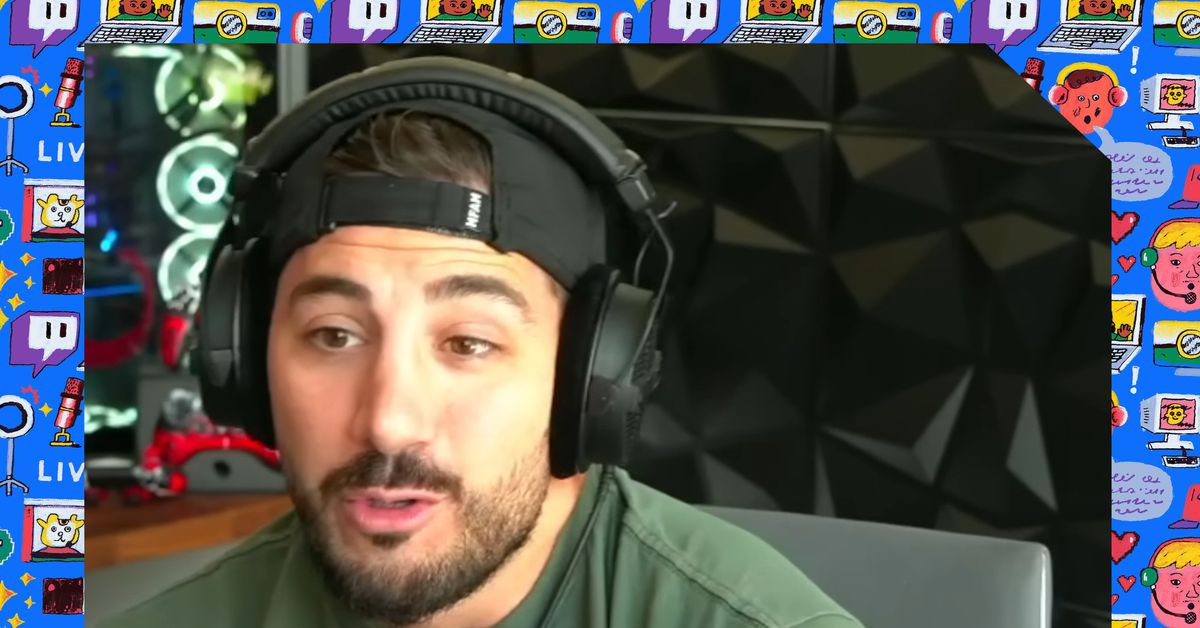
Twitch is further broadening its simulcast rules, the livestream platform announced on Friday. As shared during TwitchCon in Las Vegas, streamers can now live broadcast streams onto even more platforms — YouTube and Kick, for example. That said, streamers with an “agreement with Twitch that requires exclusivity” won’t be able to do so.
“We truly believe that Twitch is the best service to be a live, interactive creator, and we want to give streamers more freedom in just how they want to build their communities,” said Twitch VP of community product Jeremy Forrester during an interview with Polygon at TwitchCon.
This news comes on the heels of Twitch bleeding big-name talent. On Oct. 19, Kick signed massively popular streamer and co-owner of FaZe Clan Nickmercs in a one-year contract worth roughly $10 million, according to a Forbes report. This summer, the upstart company also signed Amouranth, Twitch’s most popular female streamer, and former pro-Overwatch player xQc (the latter of whom, Kick offered a $100 million deal). This is not to mention talent that moved to YouTube: In the last three years, YouTube signed Valkyrae, Ludwig, Sykkuno, LilyPichu, and more. Some of these streamers left in the wake of Twitch changing its revenue share split from 70/30 (in favor of streamers) to 50/50.
Forrester said this talent departure was not the motivator for the expanded simulcast policy, instead calling it “community driven” and saying that it was an example for Twitch developers to demonstrate that they “listen” to creator’s “concerns, and react to them when we can.”
The most interesting part of the new guidelines might just be all the way at the bottom of the FAQ. Streamers who left Twitch now have a chance to become Twitch Partners again. Per the guidelines, Twitch Partners whose previous agreements were “terminated” because they left for another service — and they notified Twitch beforehand, thus not violating the agreement — will be “eligible to reinstate their Partnership status.”
Twitch also seems to finally be acknowledging the value of cross-platform discovery. In August, Twitch updated its simulcast guidelines to include TikTok and Instagram. During TwitchCon, streamers told Polygon that TikTok had become a vital way to draw in new fans — TikTok’s short video format basically functions like a highlight reel for Twitch streamers to post their funniest moments. “Being able to curate the highlights from your stream and feeding that into the TikTok algorithm is your chance for an entirely new audience to see you,” streamer Alex Labat told Polygon in anticipation of TwitchCon. And earlier this month, Twitch introduced its own short video feature, “stories.”
Even as simulcasting options broaden, there are still rules to follow that more or less ensure streamers won’t use Twitch to direct traffic to their other platforms, or attempt to interact with their fan communities on various platforms at the same time. Streamers must “ensure” the quality of a Twitch users’ experience is “no less than the experience on other platform services” — and this includes engaging with the Twitch community via chat. Nor can streamers use a third-party app to for “merging chat features,” for example. Streamers also can’t provide links during a Twitch stream, encouraging followers to leave Twitch for a simulcast on another platform.
“We believe that creators will do it with the intent to help bring people to Twitch,” Forrester said, optimistically.
- SEO Powered Content & PR Distribution. Get Amplified Today.
- PlatoData.Network Vertical Generative Ai. Empower Yourself. Access Here.
- PlatoAiStream. Web3 Intelligence. Knowledge Amplified. Access Here.
- PlatoESG. Carbon, CleanTech, Energy, Environment, Solar, Waste Management. Access Here.
- PlatoHealth. Biotech and Clinical Trials Intelligence. Access Here.
- Source: https://www.polygon.com/23925744/twitch-simulcast-kick-nickmercs-xqc-amouranth
- 19
- a
- able
- again
- Agreement
- agreements
- alex
- algorithm
- All
- also
- an
- and
- Another
- answer
- anticipation
- app
- ARE
- as
- At
- attempt
- audience
- AUGUST
- BE
- because
- become
- beforehand
- believe
- BEST
- bottom
- bring
- broadcast
- broaden
- build
- calling
- CAN
- chance
- changing
- comes
- Communities
- community
- company
- contract
- creator
- Creators
- cross-platform
- deal
- demonstrate
- developers
- direct
- discovery
- do
- draw
- During
- earlier
- encouraging
- engaging
- ensure
- entirely
- even
- Example
- expanded
- experience
- fan
- FAQ
- favor
- Faze
- FaZe Clan
- Feature
- Features
- feeding
- Finally
- follow
- followers
- For
- Forbes
- format
- Former
- Forrester
- Freedom
- from
- functions
- further
- give
- guidelines
- had
- Have
- help
- Highlight
- highlights
- How
- HTTPS
- in
- include
- includes
- instead
- intent
- interact
- interactive
- interesting
- Interview
- into
- introduced
- Is
- IT
- ITS
- jpg
- just
- kick
- LAS
- last
- leave
- left
- less
- like
- links
- Live
- Livestream
- massively
- might
- million
- moments
- Month
- more
- most
- Most Popular
- moved
- must
- New
- news
- not
- now
- oct
- of
- offered
- on
- onto
- Options
- or
- Other
- own
- part
- partners
- Partnership
- People
- per
- platform
- Platforms
- plato
- plato data intelligence
- platodata
- platogaming
- policy
- Polygon
- Popular
- post
- previous
- Product
- Provide
- quality
- React
- requires
- revenue
- roughly
- rules
- Said
- same
- saying
- see
- seems
- Service
- Share
- shared
- Short
- signed
- So
- some
- Status
- still
- stream
- Streamers
- streams
- summer
- Talent
- than
- that
- The
- their
- Them
- there
- These
- they
- this
- three
- Thus
- tiktok
- time
- to
- To Leave
- told
- traffic
- truly
- Twitch
- twitchcon
- updated
- Upstart
- use
- value
- various
- via
- Video
- video format
- vp
- wake
- want
- was
- way
- we
- were
- when
- WHO
- whose
- will
- with
- worth
- years
- you
- your
- youtube
- zephyrnet












